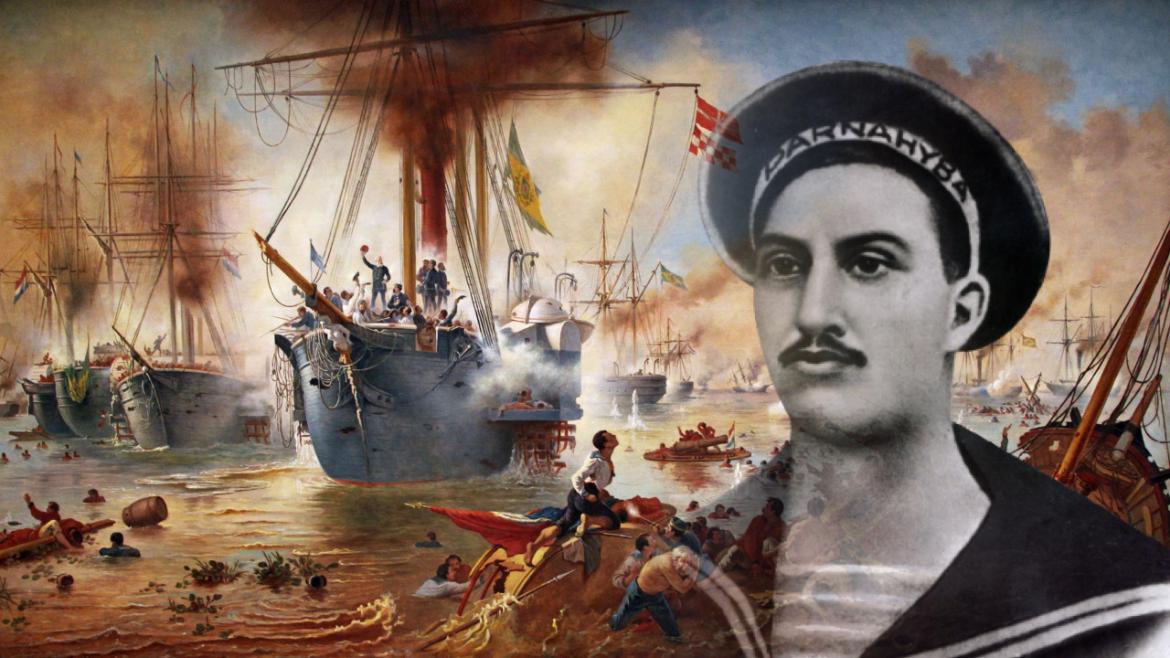Bill goes to presidential sanction
By First Lieutenant (RM2-T) Tássia Camila Navarro dos Santos – Brasília, DF
The Imperial Mariner Marcílio Dias, a prominent figure in the War of the Triple Alliance, was honored by the Brazilian Navy during the commemorations of the Naval Battle of Riachuelo on June 11 this year. Because of his importance to the country, Federal Congressman Sanderson presented, in August of this year, Bill 1402/2022, which inscribes the name of Sailor Marcílio Dias in the Book of Heroes and Heroines of the Homeland. Yesterday (9), the bill, drafted by Senator Plínio Valério, was approved in the plenary session of the Federal Senate and will be sent to the President for sanction.
“Many Brazilians already know Marcílio Dias from the names of streets, avenues, ships … it was a great pleasure to read his biography and know that he really is a hero, who died at 27 defending the Homeland. In the Senate, we have this prerogative. The Constitution guarantees this kind of homage and Marcílio Dias more than fits the profile of a hero”, highlighted Senator Plínio Valério.
“We, in the House, had all the dedication and support from the Navy to build a bill that does justice to one of the most important men in the Navy. I am sure that this tribute is more than deserved to Marcílio Dias. There are few national heroes, today around a dozen. And Marcílio is in this very select list,” emphasizes Federal Deputy Sanderson.
Who was the Imperial Mariner Marcílio Dias?
In 1838, Marcílio Dias was born, the youngest son of Pulcena Dias and Manuel Fagundes, a Portuguese seaman. The story tells that his mother, black and a washerwoman, in 1855, was unjustly imprisoned and, worried about the bad behavior of her son during his time in prison, she decided to ask her compadre to deliver Marcílio Dias to the “minors”, as the School for Grumetes in Rio de Janeiro (RJ) was known.
When he was 17, in July 1855, he joined the Imperial Fleet as a Grumete (Recruit), and was drafted into the Corps of Imperial Sailors on August 5 of the same year. He was assigned to the frigate Constituição in 1856, and soon after was transferred to the steamer Recife. In 1858, he was assigned to the Steamboat “Paraense” and was promoted to Seaman 3rd Class in 1861 and to Seaman 2nd Class the following year.
In 1863, he enrolled in the Escola Prática de Artilharia, which operated aboard the Fragata “Constituição”. On December 19 of that year he was approved and classified as a Distinguished Private with the right to wear the badge of Sailor-Artilleryman and, after that, he boarded the steamer “Parnaíba”.
In 1864, he was promoted to Seaman 1st Class and, at the end of the same year, he landed in Paysandú. He was a crew member of the Corveta “Parnaíba” when the Brazilian Squadron, under Admiral Tamandaré’s command, attacked the Paysandú Square. In 1865, on January 2nd, he had the glory of nailing the Brazilian flag to the church tower of the square, already logically dominated.
On June 11, 1865, there was the Naval Battle of Riachuelo, which immortalized the bravery of the young sailor Marcílio Dias. The “Parnaíba” Corvette, of which he was a crew member, was approached by four Paraguayan steamers: “Paraguari”, “Tacuari”, “Salto”, and the “Marquês de Olinda” (the latter, a Brazilian ship previously taken prisoner by the Paraguayans), resulting in one of the most remarkable combats of the whole war. During this episode, the Imperial Mariner was mortally wounded in a melee against four enemies, and died the next day at 2 pm. He was buried in the waters of the Paraná River on June 13.
Marine News Agency *** Translated by the DEFCONPress FYI team ***
